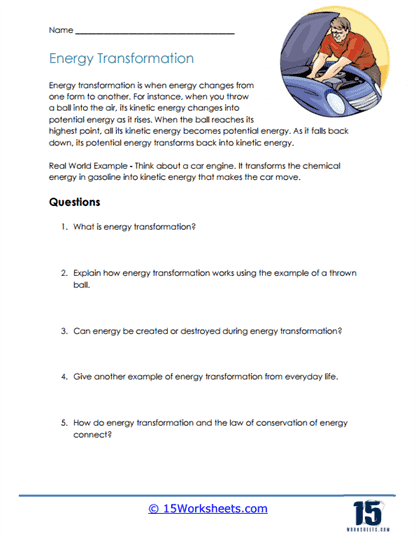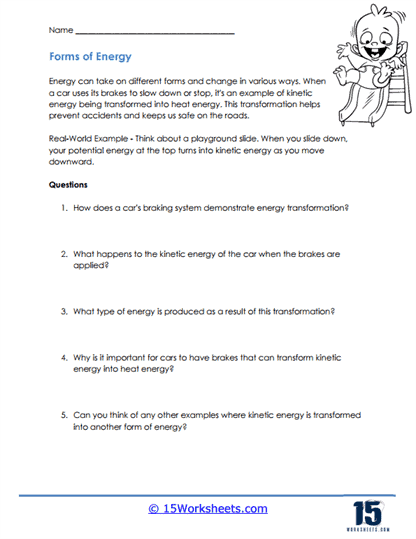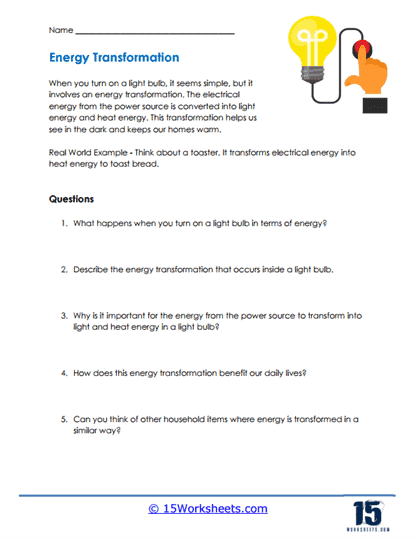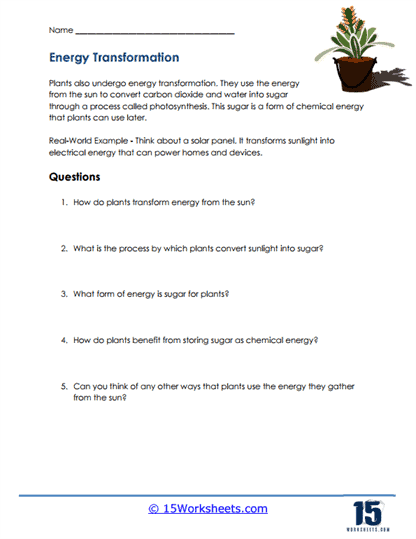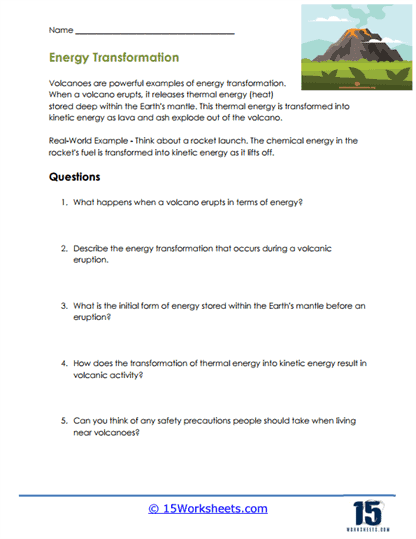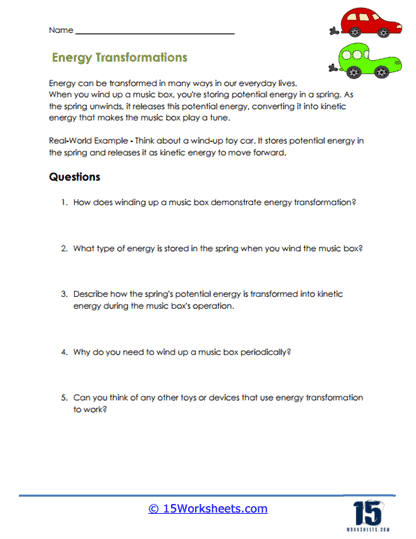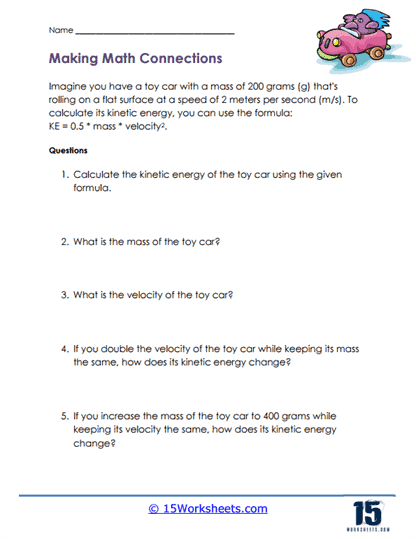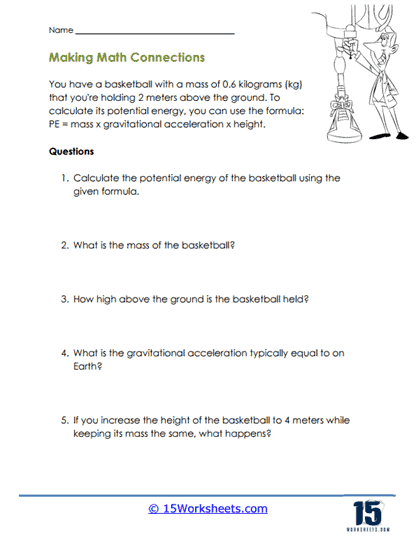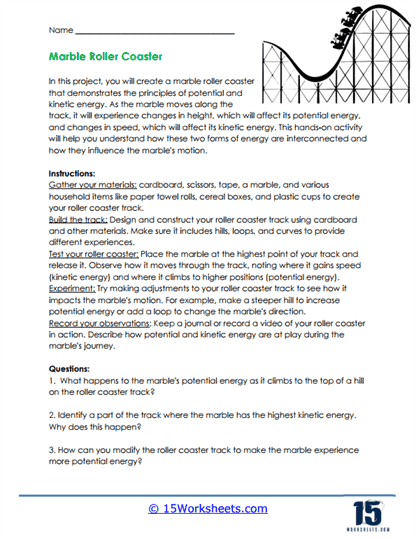Kinetic and Potential Energy Worksheets
About These 15 Worksheets
In the expansive and often complex field of physics, the study of energy stands as one of its most foundational pillars. Energy, the ability to do work, manifests in various forms, but two of the most essential and widely studied types are kinetic and potential energy. These concepts are not merely academic; they are key to understanding how objects move and interact in our world. Kinetic energy refers to the energy an object possesses due to its motion, while potential energy is the stored energy an object has because of its position or state. Together, they form the building blocks for many laws and phenomena within the discipline of physics. To effectively teach these principles, educators frequently turn to structured, thoughtfully designed worksheets. These educational tools serve as a bridge, helping students grasp, differentiate, and apply these crucial energy concepts in a clear and practical manner.
Worksheets, when used properly in the classroom, go beyond just being a study aid; they become essential pedagogical resources. By providing hands-on experience, they encourage students to actively engage with the material, allowing for a deeper comprehension of both kinetic and potential energy. Through carefully crafted exercises, students learn not only to define and calculate these forms of energy but also to visualize their dynamic relationship. For example, when working through problems that depict a falling object, students observe how an object’s potential energy-due to its height-transforms into kinetic energy as it accelerates towards the ground. Such visualizations are crucial, as they allow learners to appreciate that while the forms of energy may change, the total energy within the system remains constant, adhering to the law of conservation of energy. This principle, that energy cannot be created or destroyed but only converted from one type to another, is fundamental not only in physics but in understanding countless real-world processes.
By methodically introducing the conservation of energy principle alongside kinetic and potential energy, worksheets create a structured learning pathway. They offer students a balance of theoretical instruction and practical application, ensuring that complex ideas become more digestible. Educators typically design these worksheets with a variety of exercises, ranging from basic definition tasks to more complex calculations and scenario-based problems. This range caters to different learning styles and paces, making the material accessible for students with varying levels of understanding. Through consistent practice, students begin to internalize these concepts, transforming what may have initially seemed abstract into something more tangible. The process of completing these worksheets helps shift their understanding from passive reception to active mastery, enabling them to not only succeed in examinations but also apply these principles to everyday situations.
The goal of using worksheets in teaching kinetic and potential energy is not simply to ensure students can recite definitions or plug numbers into formulas. Rather, the objective is to foster a deeper level of cognitive engagement where students can intuitively interpret the physical world through the lens of energy transformations. When students are able to see the connection between theory and reality-whether it’s understanding how a rollercoaster gains speed as it descends or why a compressed spring stores energy-they begin to appreciate the relevance and power of physics in everyday life. Well-constructed worksheets serve as a crucial tool in this process, helping to demystify these concepts and make them relatable. Through continuous practice and application, students cultivate a robust and active understanding of energy that will serve as a foundation for future learning, not just in physics but in other scientific and engineering disciplines.
What is Kinetic Energy (KE)?
This is the energy an object possesses due to its motion. Anything that moves has kinetic energy, and it’s directly proportional to the object’s mass and the square of its speed. The formula for kinetic energy is KE = 0.5 x m x v^2, where m represents mass and v is the velocity.
Forms of KE
Translational – This is the energy due to the linear motion of an object. For example, a car moving down a road or a person jogging in a park has translational kinetic energy.
Rotational – This is the energy an object has due to its rotational motion. The Earth rotating around its axis or a spinning top both possess rotational kinetic energy.
Vibrational – At a microscopic scale, atoms and molecules in a substance can vibrate, and this vibration is associated with kinetic energy. This is particularly relevant in the context of thermodynamics, where the kinetic energy of particles contributes to the temperature of a system.
Relativistic – When objects approach a significant fraction of the speed of light, classical physics no longer accurately predicts their behavior.
Kinetic Energy in Fluids – Fluids in motion also have kinetic energy. This is particularly important in fluid dynamics. For example, the kinetic energy of moving water can be harnessed for hydroelectric power.
What is Potential Energy (PE)?
This is the stored energy an object has because of its position or configuration. The most common type encountered in basic physics is gravitational potential energy, which is energy an object possesses due to its height above the ground. Its formula is PE = m x g x h, where m is mass, g is the gravitational constant (approximately 9.81 m/s^2 on Earth’s surface), and h is height.
Forms of PE
Gravitational – This is the energy an object has due to its position relative to a gravitational source, typically the Earth.
Elastic – Energy stored due to deformation, as seen in stretched or compressed springs.
Chemical – This is the energy stored within the chemical bonds of molecules. When chemical reactions occur, this energy can be released or absorbed. The energy stored in the bonds of hydrocarbons, which is released during combustion, is an example of chemical potential energy.
Electrostatic – When two charges are separated, there’s an energy associated with their configuration due to Coulomb’s Law.
Nuclear – This is the energy stored within the nuclei of atoms. It is this energy that is released in nuclear reactions, both in fission (splitting of nuclei) and fusion (combining of nuclei).
Magnetic – Energy stored due to the position/configuration of magnets or magnetic fields. For instance, two opposing magnets held close together store potential energy that can be released when they’re allowed to repel each other.







